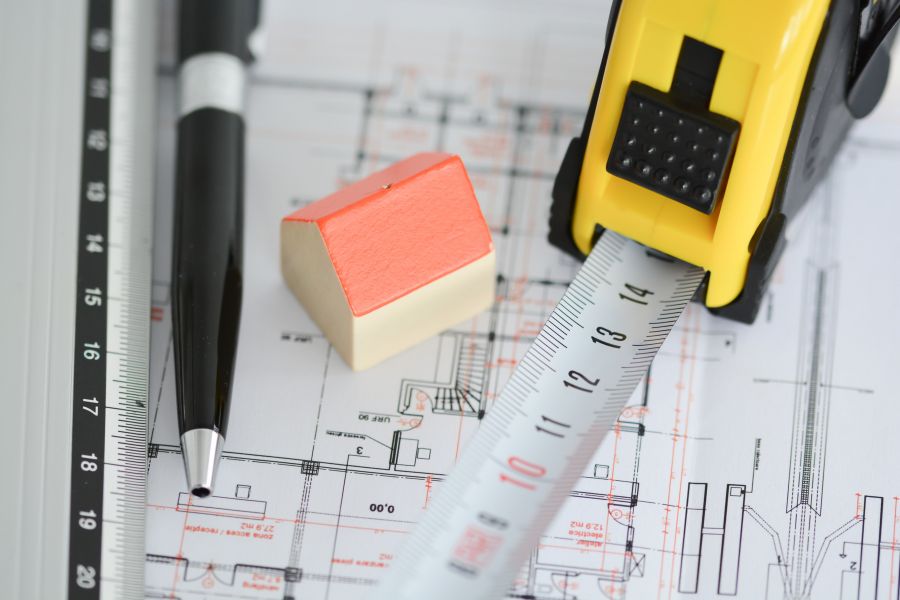Unlock Success: Tips for Navigating the Committee of Adjustment
Welcome to our comprehensive guide on navigating the Committee of Adjustment process successfully. We understand that the guidelines and requirements for the Committee of Adjustment can be daunting, whether you’re in Toronto or any other part of Canada. That’s why we’re here to share our expert tips and strategies with you.
With our guidance, you’ll learn how to effectively navigate the Committee of Adjustment process and increase your chances of approval. From understanding the specific guidelines and requirements to presenting your case persuasively, we’ll equip you with the knowledge and tools you need to unlock success.
What is the Committee of Adjustment?
At its core, the Committee of Adjustment is a regulatory body that operates in municipalities across Canada, including Toronto. Its main responsibility is to review and make decisions on minor variances, land severances, and consent applications. Understanding the role and function of the Committee of Adjustment is essential to navigate the process effectively.
As experts in the field, we’ve helped countless individuals and organizations successfully navigate the Committee of Adjustment process. With our guidance, you can feel confident that you’ll be able to achieve your goals and overcome any challenges that arise.
Whether you’re looking to apply for a minor variance, a land severance, or a consent application, the Committee of Adjustment can present a complex and challenging process that requires a thorough understanding of the guidelines and requirements. But with our comprehensive guide, you’ll have all the information you need to navigate the process with ease and achieve success.
Our guide includes expert advice on everything from submitting your application and presenting your case to hiring a professional planner or lawyer and overcoming common challenges along the way. No matter your goals or needs, we have the resources and expertise to help you unlock success with the Committee of Adjustment.
The Committee of Adjustment Process
Navigating the Committee of Adjustment process can be complex, but with our expert guidance, your application will be smooth and successful. The first step in the process is to submit your Committee of Adjustment application, which should include all the necessary documentation and information. The application form usually requires a detailed description of the proposed project, including drawings, photographs, and other supporting materials.
Once you have submitted your application, the Committee of Adjustment will review it to ensure that it meets all the requirements and criteria. Typically, the Committee will notify you of any missing information or documentation and give you the opportunity to provide it. After the initial review, the Committee will schedule a hearing date, which you must attend to present your case.
During the hearing, the Committee will consider your application and any objections raised by the public or other stakeholders. You will have the opportunity to present your arguments and evidence, and respond to any questions or concerns raised by the Committee. After the hearing, the Committee will make a decision on your application and notify you of their decision.
It is important to note that navigating the Committee of Adjustment process can take several weeks or even months, depending on the complexity of your application and the workload of the Committee. Therefore, it is crucial to plan ahead and submit your application well in advance of your desired timeline.
Documentation Requirements
Some of the Committee of Adjustment process documentation requirements may include:
- Property survey
- Site plan
- Floor plans and elevations
- Photographs of the property and surrounding area
- Planning justification report
- Any other relevant supporting materials
Timelines
The Committee of Adjustment process timelines vary by municipality but typically take several weeks or months. It is important to consult with your municipality’s Committee of Adjustment or a professional planner to determine the specific timelines and requirements for your application. By understanding the Committee of Adjustment process and its requirements, you can submit a successful application and achieve your desired outcome.
Tips for a Successful Committee of Adjustment Application
Submitting a Committee of Adjustment application can be daunting, but with our expert tips, you can increase your chances of success. Here are some valuable strategies to keep in mind:
Understand the Criteria for Approval
Before submitting your application, it’s crucial to understand what the Committee of Adjustment is looking for in an approval. Review the guidelines and requirements carefully, paying close attention to the factors that contribute to a successful application. For example, if you’re applying for a minor variance, be sure to demonstrate that the proposal is minor in nature and meets the four tests outlined in the Planning Act.
Present Your Case Effectively
The way you present your case to the Committee of Adjustment can greatly impact your chances of success. Be sure to prepare a clear and concise argument, focusing on the key elements of your proposal. Providing supporting documentation and visuals can also help to strengthen your case.
Follow the Required Documentation and Timelines
Missing a required document or deadline can result in your application being denied. Be sure to carefully review the application requirements and adhere to all timelines provided. It’s also important to communicate effectively with the Committee of Adjustment staff to ensure you have all the necessary information and documentation to move forward.
Consider Working with a Professional
If you’re unfamiliar with the Committee of Adjustment process, hiring a professional planner or lawyer can be incredibly beneficial. An expert can help you navigate the process effectively, ensure your application is complete and meets all guidelines, and present your case professionally at the hearing.
Remember, the key to a successful Committee of Adjustment application is thorough preparation, effective communication, and attention to detail. By following these tips, you can increase your chances of approval and unlock success with your proposal.
Understanding Minor Variances
Minor variances are a common type of application processed by the Committee of Adjustment. These are deviations from the zoning by-laws that are considered minor and do not impact the general intent and purpose of the by-law.
For example, minor variances may include adjustments to building setbacks, reduced parking requirements, or increased building height.
It’s important to note that a minor variance should not result in any negative impacts on neighbouring properties or the community. As such, the Committee of Adjustment requirements for minor variances are stringent, and applicants must demonstrate how their proposed variance meets these requirements.
When applying for a minor variance, ensure that all required documentation is submitted, including site plans and drawings, along with a description of the proposed variance and how it satisfies the Committee of Adjustment guidelines.
It’s also important to note that the Committee of Adjustment may require a public hearing for minor variances, where the applicant must present their proposal to the public and the Committee for review.
By understanding the specific requirements for minor variances, you can navigate the Committee of Adjustment process successfully and increase your chances of approval.
Land Severances and Consent Applications
When it comes to land severances and consent applications, the Committee of Adjustment has specific requirements and considerations you need to navigate. In general, a land severance is the process of dividing one piece of land into two or more parcels, while a consent application is a request to sever land without creating new lots.
There are various factors to consider when applying for a land severance or consent application, such as zoning by-laws, the size of the new parcels, and the impact on neighbouring properties. It’s essential to understand the specific Committee of Adjustment guidelines for these types of applications and how they may differ from other types of applications.
Land Severances
When submitting a land severance application, you must provide detailed information about the existing property and the proposed new parcels. This includes a survey plan, legal descriptions, and proof of ownership.
The Committee of Adjustment will evaluate whether the proposed severance is compatible with the surrounding area and meets the requirements of the Planning Act. They will consider factors such as the impact on adjacent properties, traffic flow, and municipal services.
Consent Applications
A consent application involves the proposed severance of land without creating new lots. This type of application often arises when an existing property owner wishes to sell off a portion of their land.
When submitting a consent application, you must provide information about the existing property and the proposed severance, including legal descriptions and survey plans. The Committee of Adjustment will evaluate whether the proposed severance is compatible with the surrounding area and meets the requirements of the Planning Act.
It’s important to note that a consent application does not guarantee approval for a land severance. The Committee of Adjustment will evaluate each application on a case-by-case basis, considering the impact on the surrounding area and any objections raised by neighbours or other interested parties.
- Provide detailed information about the proposed severance
- Consider the impact on neighbouring properties
- Ensure compliance with the Planning Act and guidelines
By understanding the specific requirements and considerations for land severances and consent applications, you can navigate the Committee of Adjustment process with confidence.
Presenting Your Case to the Committee of Adjustment
Presenting your case effectively to the Committee of Adjustment is crucial for a successful application. Here are some tips to navigate this important aspect of the process:
- Prepare a clear and concise argument: Your argument should clearly convey the reasons for your application and why it aligns with the Committee’s guidelines. Be sure to include any supporting documentation that strengthens your case.
- Arrange your presentation: Your presentation should be well-organized and engaging. Use clear and concise language, and provide visual aids, if possible. Be sure to practice your presentation ahead of time to ensure a smooth delivery.
- Address any potential concerns: Anticipate any potential concerns or objections that the Committee may have and be prepared to address them in your presentation. This will demonstrate your knowledge and understanding of the application process.
- Be respectful: Present your case in a professional and respectful manner. Avoid becoming defensive, and listen carefully to any feedback or questions posed by the Committee.
By following these tips, you can present your case to the Committee of Adjustment with confidence and increase your chances of approval. For more guidance on navigating the Committee of Adjustment process and how we can help you, contact us.
Visual Aids
Consider using visual aids such as photos or diagrams to help illustrate your proposal and enhance your presentation. This can help the Committee better understand your intentions and increase the chances of approval.
Working with Professionals: Hiring a Planner or Lawyer
At times, navigating the Committee of Adjustment process can be overwhelming, especially if you’re unfamiliar with the requirements. Hiring a professional planner or lawyer can help ease the burden and increase your chances of success.
Working with a planner or lawyer who specializes in navigating the Committee of Adjustment process can provide you with the expertise you need to achieve your goals. With their experience, they can help you understand the guidelines and requirements, prepare all necessary documentation, and present your case effectively to the Committee.
When hiring a professional, it’s essential to find the right one for your needs. Look for planners or lawyers who have experience with Committee of Adjustment applications and approvals. They should be knowledgeable about local regulations and have a track record of success in helping clients achieve their goals.
Remember that hiring a professional is an investment in your success. While it may seem costly upfront, it can save you time and money in the long run by increasing your chances of approval and avoiding delays or revisions to your application.
If you’re feeling overwhelmed by the Committee of Adjustment process, consider hiring a professional to help you navigate the journey with confidence and ease.
Committee of Adjustment in Toronto
If you’re planning to submit a Committee of Adjustment application in Toronto, it’s essential to understand the specific requirements and guidelines for the city. Toronto has its own Committee of Adjustment, which is responsible for reviewing and making decisions on minor variances, land severances, and consent applications.
When submitting an application to the Toronto Committee of Adjustment, it’s important to ensure that your documentation meets the city’s criteria. The Committee has its own set of guidelines, which are outlined on the City of Toronto website.
One important aspect to keep in mind when dealing with the Committee of Adjustment in Toronto is the requirement for public notification. All applicants are required to provide notice to their neighbours and to post a notice on their property. It’s important to follow the specific guidelines for notification, as failure to do so can result in delays or even a denied application.
In addition, it’s worth noting that the Toronto Committee of Adjustment has the authority to impose specific conditions on approved applications. These conditions must be adhered to, so it’s important to carefully review and understand any conditions that are attached to your application.
Understanding the Toronto Committee of Adjustment Process
The process for submitting an application to the Toronto Committee of Adjustment is similar to the process in other municipalities. However, there may be some differences in the specific requirements and timelines for Toronto applications. It’s essential to carefully review the city’s guidelines and requirements before submitting your application.
The Toronto Committee of Adjustment typically holds public hearings to review applications. These hearings are open to the public, and you will have the opportunity to present your case and answer any questions that the Committee may have. It’s important to prepare carefully for these hearings and to ensure that you are presenting your case effectively.
Common Challenges and How to Overcome Them
Navigating the Committee of Adjustment process can be daunting, and challenges may arise along the way. It’s essential to prepare and anticipate potential obstacles to increase your chances of success. In this section, we will discuss some common challenges and provide practical solutions to overcome them.
1. Lack of Preparation
One of the most significant hurdles in navigating the Committee of Adjustment process is a lack of preparation. This can include incomplete applications, insufficient supporting documentation, and failure to understand the guidelines and requirements of the Committee of Adjustment.
To overcome this challenge, it’s crucial to do your research and seek professional guidance if necessary. Familiarize yourself with the specific guidelines and requirements for your application and ensure that you have all the necessary documentation in order. Consider working with a professional planner or lawyer to ensure that your application is thorough and complete.
2. Opposition from Neighbours
Opposition from neighbours can be a significant barrier to a successful Committee of Adjustment application. This can include concerns about the impact on property values, noise, traffic, and other factors.
To overcome this challenge, it’s essential to engage with your neighbours early in the process and address any concerns they may have. Consider holding a community meeting to discuss your plans and listen to input from neighbours. Be prepared to make adjustments to your application if necessary to address their concerns.
3. Complex Applications
Certain applications, such as land severances and consent applications, can be particularly complex and challenging to navigate.
To overcome this challenge, it’s crucial to seek professional assistance from a planner or lawyer experienced in these types of applications. They can guide you through the process, ensure that your application meets all the necessary requirements, and help you present your case effectively to the Committee of Adjustment.
4. Denial of Application
Despite your best efforts, there is always the possibility that your Committee of Adjustment application may be denied. This can be a frustrating and disheartening experience.
To overcome this challenge, consider requesting feedback from the Committee of Adjustment and reapplying if appropriate. It’s essential to review the reasons for the denial carefully and address any concerns in your subsequent application.
In conclusion, navigating the Committee of Adjustment can be challenging, but with the right preparation, guidance, and perseverance, you can overcome any obstacles that may arise. Always be prepared, engage with your neighbours, seek professional assistance when necessary, and stay positive. With these strategies, you can increase your chances of success and unlock your path to approval.
Join Us Today!
At Acadia Drafting, we understand that navigating the Committee of Adjustment process can be overwhelming. That’s why our team of experts is here to help. With our comprehensive knowledge of the Committee of Adjustment guidelines and requirements regarding plans and drawings, we can provide you with the support you need to succeed.




